The Big Read – SAIC (4/6) – Volvo buses, Iveco trucks and an old Seat Ibiza
With its own-brands and the joint ventures with Volkswagen and General Motors, SAIC is very successful in the passenger car market. The company is much less known in the professional, heavy duty market. Only when the Shanghai company acquired Hongyan and Nanjing Automobile they became a player in the truck market.
Shanghai Sunwin Bus Co.,Ltd.
In the first part of this series, describing the early history of SAIC, I mentioned a couple of public transport companies and associated workshops. In the early days the automobile was available only to the happy few and regular people travelled by public transport. With private car ownership prohibited in communist China, this situation continued well into the 1980s. There were a number of bus companies in Shanghai and in the 1950s and 1960s bus production was just as prominent as passenger car production.
Like the passenger cars, the several bus companies resided under a government committee, were regularly merged or renamed and most of them eventually became part of SAIC. Also like the passenger cars, several Chinese bus makers established joint ventures with international brands to advance the development of new technology. In 2000 SAIC revamped its entire bus industry into a joint venture with Volvo Trucks. At the same time it introduced the brand name Sunwin.
The tie-up with Volvo benefitted Sunwin in two ways. The brand gained access to modern chassis technology and it opened a route to export. Sunwin is a mid-sized bus maker, but has enjoyed several quite large orders from around the world. For the transition to electric buses, Sunwin could fall back on almost a century of experience, since the city of Shanghai operated several trolley-bus lines for decades. The first line opened in 1914, the last line was replaced by a rail-bound tram in the late 1990s. Sunwin also diversified into long-distance coaches and smaller shuttle and school buses.
In 2016 Volvo exited the joint venture. The Swedes sold all shares back to SAIC, making Sunwin a wholly owned subsidiary again.
SAIC-IVECO Hongyan Commercial Vehicle Co., Ltd.
Trucks were the foundation of the Chinese car industry in the 1950s and remained the backbone of the industry until the 1990s. Although trucks were made in Shanghai as well, this business never gained the same importance as for example FAW Jiefang or Dongfeng. Shanghai Automobile has always been a smaller player in the heavy duty market, until some acquisitions in the early 2000s.
Trucks aren’t the focus of CarNewsChina, but when describing the large state-owned conglomerates, I can’t ignore them. SAIC now owns two truck making companies, both long-running brands they acquired in the 2000s. The first brand is Hongyan, from a company that started out as the Sichuan Automobile Manufacturing Plant.
Of course this company has a complex history too, so it’s a bit of a winding road before we circle back to SAIC. Sichuan Automobile Manufacturing Plant makes the first trucks with the Hongyan brand name. This factory is established by Sichuan Province in October 1965. Initially, the trucks are based on technology from the French manufacturer Berliet. The two companies have even had an extensive collaboration for some time, training Chinese engineers in France. The main buyer of Hongyan trucks is the Chinese army.
Even much older than Hongyan is Jinan Automobile Works. That company was founded in 1935 by the Kuomintang and made car parts. After the communist takeover of China, it also starts building and developing trucks from 1956 onwards, under the brand name Huanghe.
In 1984, Sichuan Automobile, Jinan Automobile and a several more truck factories are brought together into a large group under the name of China National Heavy Truck Company (CNHTC). However, this company is much better known under the name of their Hong Kong stock exchange listing years later: Sinotruk. CNHTC forms a technical cooperation with Austrian Steyr and thus the cooperation between Hongyan and Berliet ends. Hongyan trucks are based on Steyr trucks from the mid-80s.
In 2001, CNHTC runs into financial difficulties and is forced to reorganize and realign its investments. The Hongyan factory is divested and comes into the hands of the government of Chongqing. (The city of Dazu, where Hongyan is located, became part of the city province of Chongqing during a regional reorganization and therefore no longer belonged to neighboring Sichuan). The new owner forms the state-owned Chongqing Heavy Vehicle Group and renames the Hongyan plant to Chongqing Hongyan Automobile Company.
However, the Chongqing government does not intend to run the factory on public funds alone and is looking for an investor. This investor is found in Xiang Huoju Group, commonly known as Torch Group, a diversified company originally from Xinjiang Province. Torch Group acquires 51% of the shares and continues the production of Hongyan trucks.
The Torch Group is part of Delong Group, a family business founded in 1986, which invests and operates in the most diverse sectors. The company has interests in food manufacturing, real estate, consumer electronics, entertainment and industrial activities. Torch Group is the business unit that makes car parts, among other things. At the end of 2003, however, Delong Group runs into serious problems due to financial malpractice and improper share transactions. The company implodes and naturally drags Torch Group along in its spectacular crash. It puts Chongqing Province back at the helm of Hongyan Automobile again and has to carry out another reorganization. It is clear that a stable, reliable partner must now be found, preferably also bringing some technical know-how. And this is when SAIC appears on the radar.
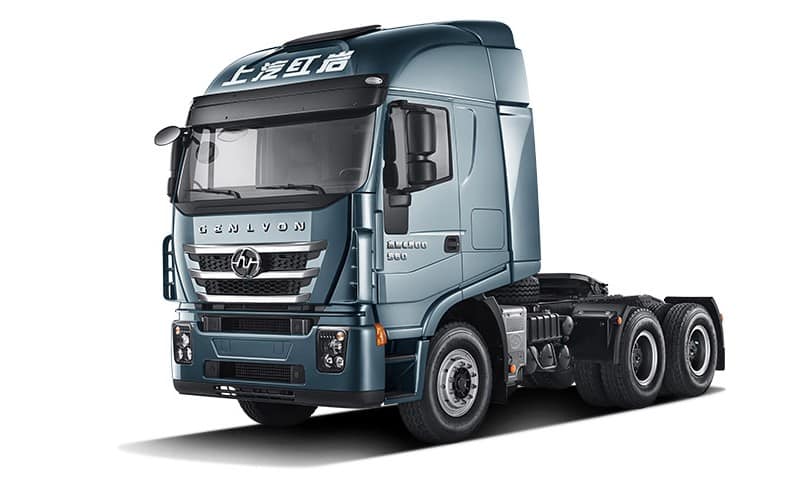
Top-of-the-line Hongyan Genlyon with sleeper cab 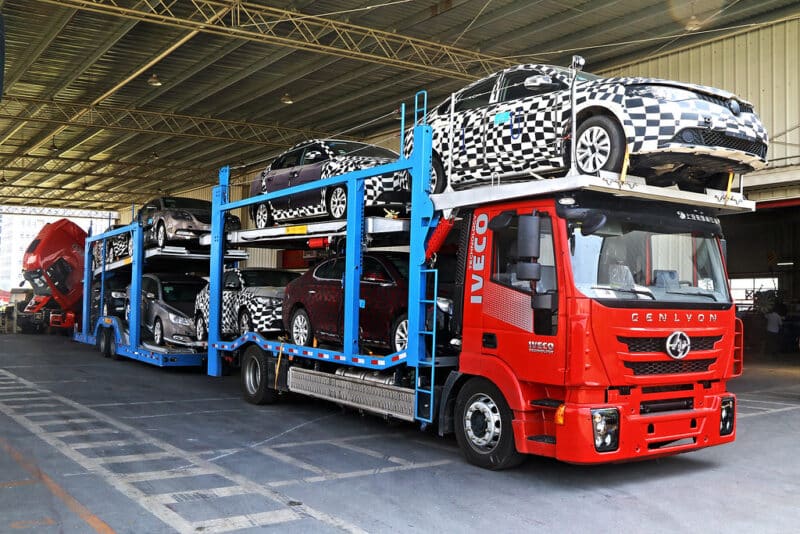
Hongyan Genlyon car transporter (photo by Jason Liu)
In December 2005, Chongqing Heavy Vehicle Group, SAIC and the Italian company Iveco sign a letter of intent to cooperate, but a joint venture is yet out of reach due to the various activities of Iveco in China. The companies need some clever accounting strategies to circumvent the bureaucratic rules. SAIC and Iveco set up an investment joint venture, SAIC-Iveco Investments, in 2006 and this company again enters into a joint venture with Chongqing City, the owner of Hongyan. In June 2007 SAIC-Iveco Hongyan Commercial Vehicles is finally a reality.
In the beginning SAIC-Iveco has 66% of the shares and Chongqing Heavy Vehicles 34%, but from 2016 SAIC itself takes an increasing share of SAIC-Iveco. The current equity ratio is SAIC 57%, Chongqing Heavy Vehicle 34% and SAIC-Iveco 9%. Nevertheless, the joint venture is responsible for the production of Iveco trucks for the Chinese market. The Italians sell 4 model lines, all based on their European trucks. However, the trucks are not sold under the Iveco brand name in China, but as Hongyan. The Iveco logo is on trucks that are exported from China to other countries.
Nanjing Iveco Automobile Co., Ltd. / Nanjing Automobile (Group) Corporation
SAIC’s second entry into the world of trucks is a collateral benefit of its merger with Nanjing Automobile. Besides the MG Rover assets SAIC also inherited one of China’s well-known truck brands: Yuejin. Nanjing Automobile is one of the older car manufacturers in China and has its origins during the “Great Leap Forward”, when others like FAW Hongqi and Beijing Auto were also founded.
In 1947, Nanjing Automobile started as Nanjing Car Repair Factory in the city of the same name, not very far from Shanghai. The truck maintenance garage belonged to the Kuomintang government, but two years later the People’s Liberation Army takes control and turns it into a military workshop. The company goes through several name changes and from 1957 it is known as the Nanjing Automobile Manufacturing Factory.
In March 1958 the production of trucks starts with the Yuejin NJ130 model, in this case a light truck based on the Russian GAZ 51. This Russian technology serves as a basis for several manufacturers, but Nanjing Automobile quickly becomes one of the most successful. For years they are the second largest truck manufacturer in the country after FAW Jiefang. By the way, the brand name is Guerin in the very beginning, meaning “Great Leap Forward”. The name is changed to Yuejin (meaning the same, and the Mandarin didn’t change either) before the production starts.
Nanjing Automobile also ventures into a passenger car early on. In September 1958 they show the Yuejin CN750 at a vehicle exhibition. This car is a fairly accurate copy of the GAZ M20 Pobeda, on which one of the Shanghai Fenghuang prototypes was also based. Nanjing Auto builds one or two copies for testing, but it never comes to series production. However Nanjing produces and supplies the engine, also an original Russian design, for many years.
The main business is however the Yuejin trucks.. The first generation of vehicles and their countless derivatives are produced well into the 1980s. The military not only owns the company, but is also one of its main customers. Thanks to the military focus, Yuejin also makes a variety of off-road trucks and variants with four-wheel drive.
From the late 1980s, the military gradually hands over Nanjing Auto to the Jiangsu provincial government, where Nanjing is located. Due to this transition, the company needs to reposition itself more to the civilian market, which requires modern products. Nanjing Auto buys molds for cabins and machinery from the Japanese company Isuzu and starts a technical cooperation with the Italian company Iveco. The Iveco technology enables them not only to make more modern light trucks, but they are also expanding into the van segment by launching a local variant of the Iveco Daily.

Iveco Daily 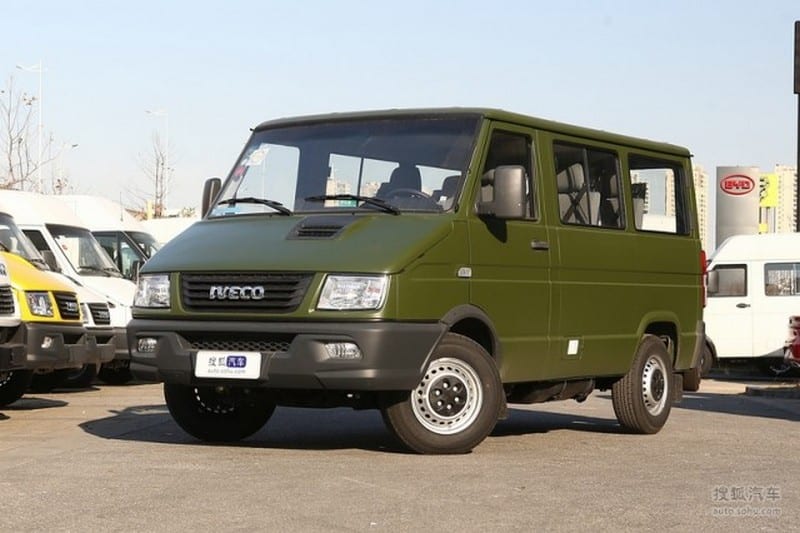
Iveco Daily
The transfer by the army is completely completed in 1995. Yuejin Motor (Group) Corporation, a holding company of Jiangsu Province, then fully owns Nanjing Automobile (Group) Corporation, the actual operating company and truck maker. The main company of Nanjing Auto is Yuejin Automobile Company, which also includes the original Nanjing factory from the 1950s. When in full control Jiangsu Province seizes the opportunity to boost Nanjing Auto speed development.
Firstly, Yuejin expands the technical cooperation with Iveco into a true joint venture. Nanjing Iveco Automobile Company is 50/50 joint venture between Nanjing Auto and Iveco, established in 1996. The company produces newer versions of the Daily and Iveco light trucks. Later, the company also builds a factory for diesel engines.
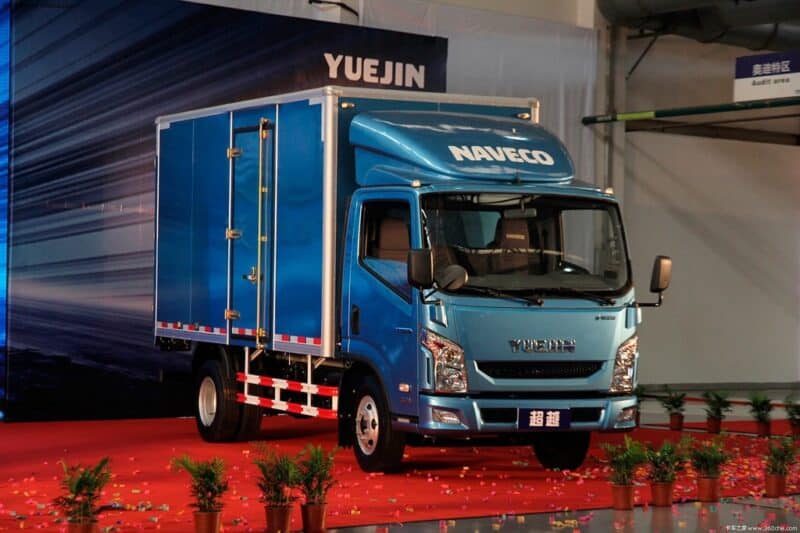
Second, Nanjing Auto returns to the passenger car business for the first time since its failed attempt in 1958. Together with the Malaysian steel giant Lion Group, it forms the joint venture Nanjing Nanya Automobile Company in 1997. This joint venture has a clear goal: buy up the production line of the first generation Seat Ibiza (launched in 1984). Nanjing Nanya also concludes a license agreement with Seat for the use of intellectual property.
While Nanjing Nanya quickly snaps up the rights to assemble the Ibiza and ships the production line to China, series production takes a while to achieve. The cars don’t roll off the production line until Fiat takes over Lion Group’s shares in the joint venture. That happens in 1999 and shortly afterwards the Nanjing Eagle (Yingge’er in Chinese) appears on the market. The car is virtually unchanged from the original, including China-made ‘System Porsche’ engines. Nanjing also brings its own development to the market. The Nanjing Unique (Younike) is the front of this Ibiza, combined with the back of the Seat Inca.
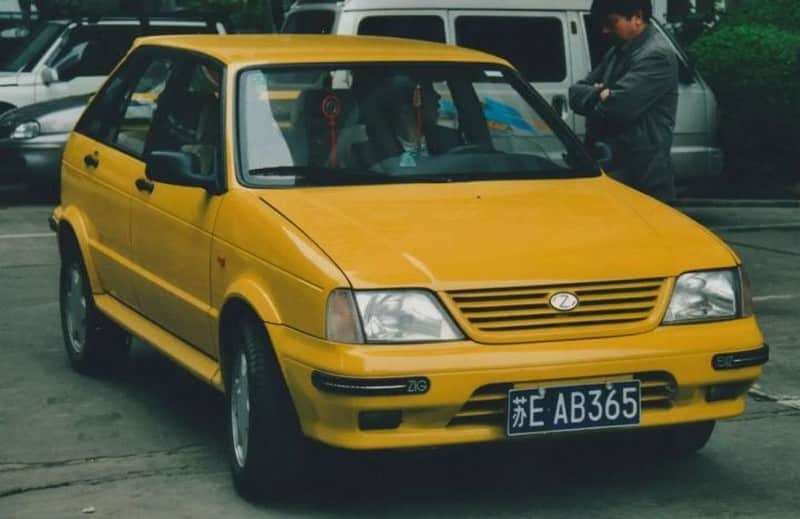
Nanjing Eagle (photo by Erik van Ingen Schenau) 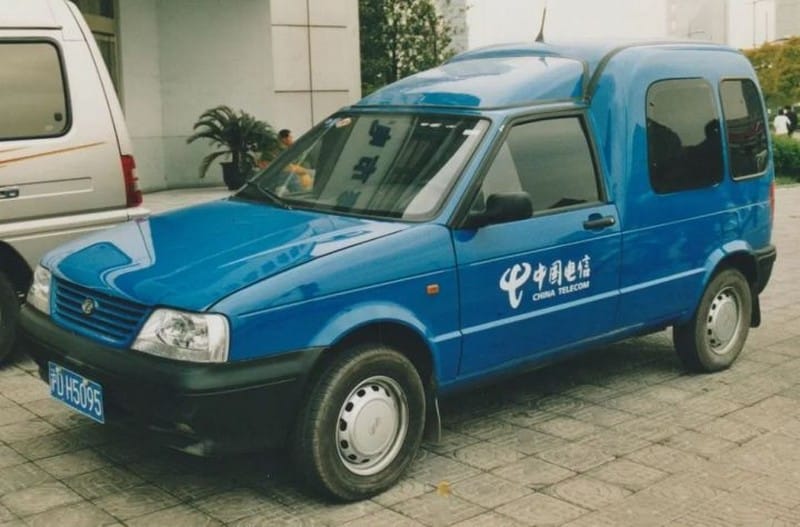
Nanjing Unique (photo by Erik van Ingen Schenau)
However, Fiat has not bought into Nanjing Nanya to sell an old Seat. They have just developed their own ‘world car’, the Palio hatchback and station wagon and the Siena sedan. These models join the line-up in the early 2000s. The Doblo MPV/minivan also makes its appearance.
In 2003 the license agreement with Seat ends and the production of the Encore is therefore discontinued. However, this is only temporary. Together with Ningbo Bird, a mobile phone manufacturer, Nanjing has invested in a new factory in Wuxi, which bears the name Wuxi Xinyatu Automobile. Nanjing is carrying out a major facelift for the Ibiza, including a new interior design, bypassing restrictions and intellectual property. The Ibiza is available again in mid-2004, although it will be called Nanjing Soyat (the English name for Xinyatu) Encore. The Unique re-appears as well, but remarkably enough, Nanjing has now given this car a single rear door.
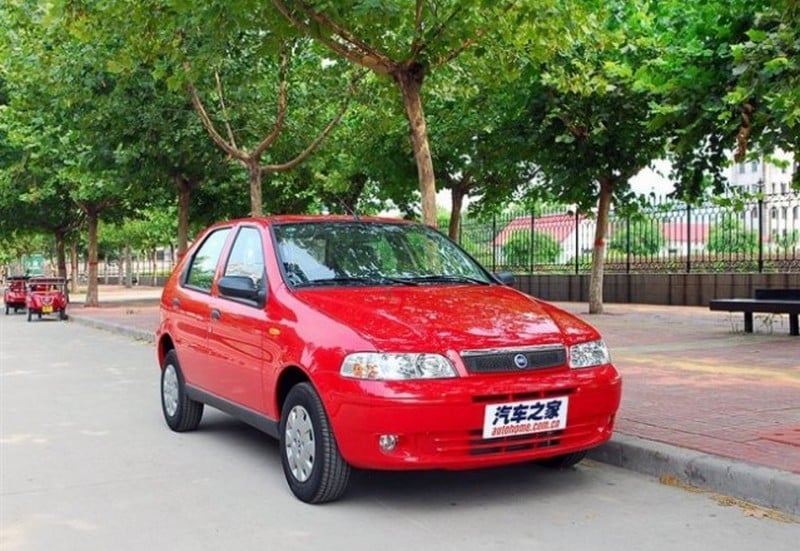
Fiat Palio 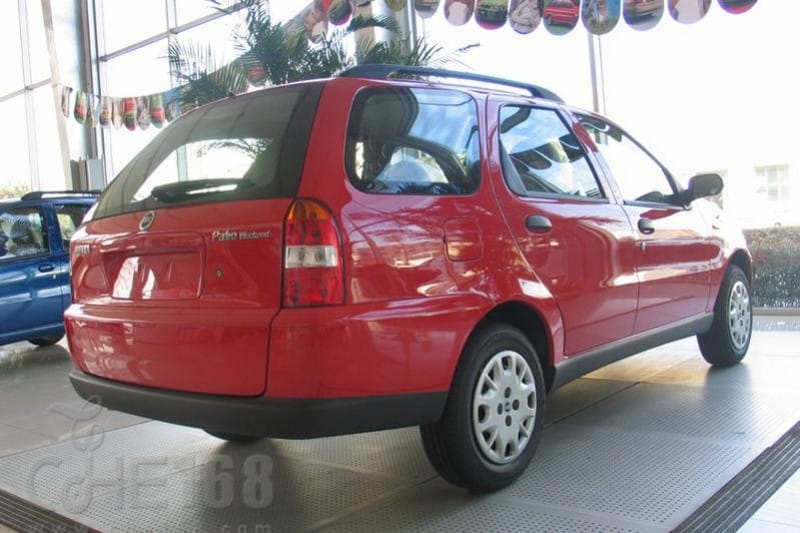
Fiat Palio Weekend 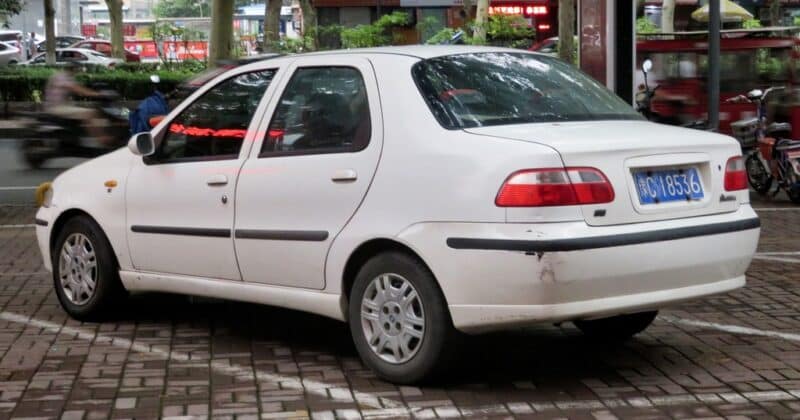
Fiat Siena
The Ibiza variants are quite successful and sell enough for Nanjing to make bigger plans. A self-developed sedan version of the Soyat appears in 2006, but it does not reach the production stage. Nanjing Auto has already shifted the focus. Ningbo Bird soon dropped out (they transfer their money to a project with Changfeng Liebao) and Nanjing wants to become an independent car manufacturer. To that end, they buy the remains of the bankrupt MG Rover in March 2005.
A year later, Nanjing Mingyue Automobile Company is founded. Mingyue means ‘modern gentleman’, the meaning the Chinese give to the letters MG. At a new factory in Pukou, refreshed versions of the MG ZR and ZT are initially being produced, although they are called MG 3 and MG 7. As described in the chapter of SAIC Motor, tensions over what of MG Rover belongs to whom, lead to a dispute between the two companies, and eventually to the acquisition of Nanjing Auto by SAIC.
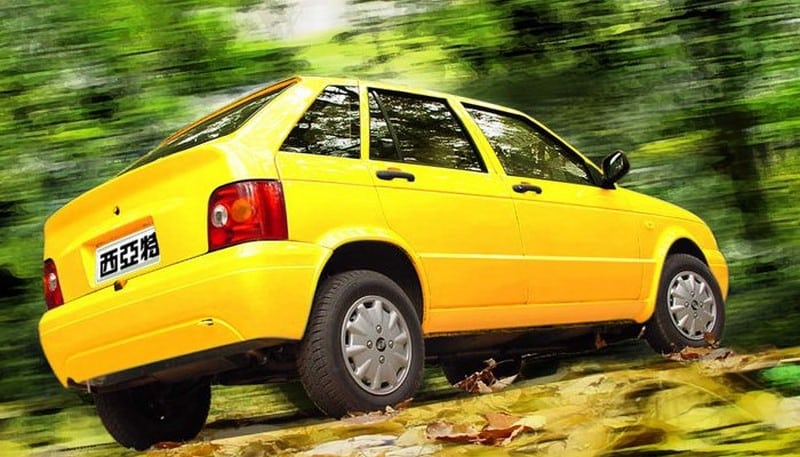
2004 Soyat Encore 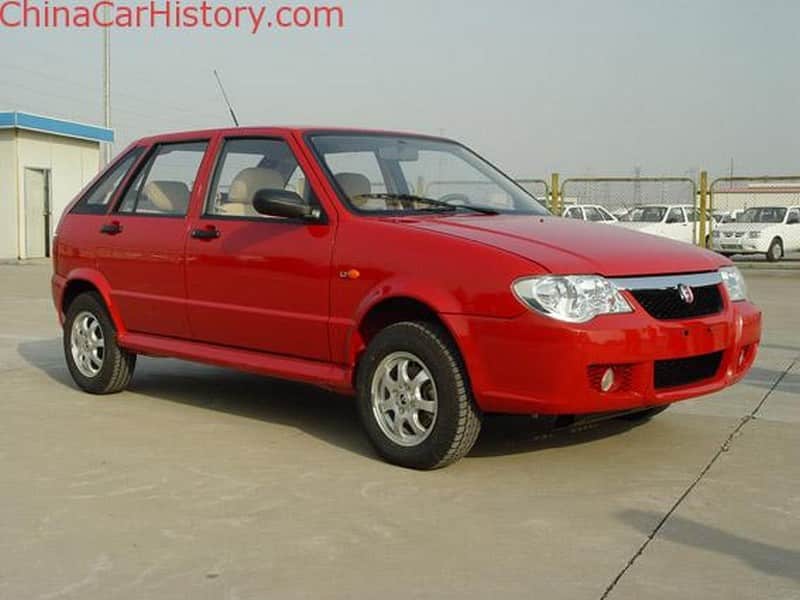
2006 Soyat Encore 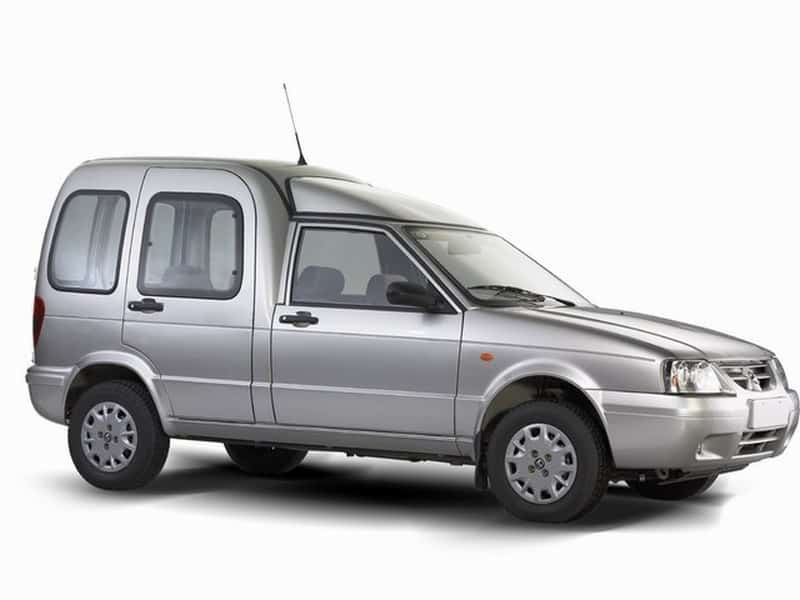
2004 Soyat Unique with rear door 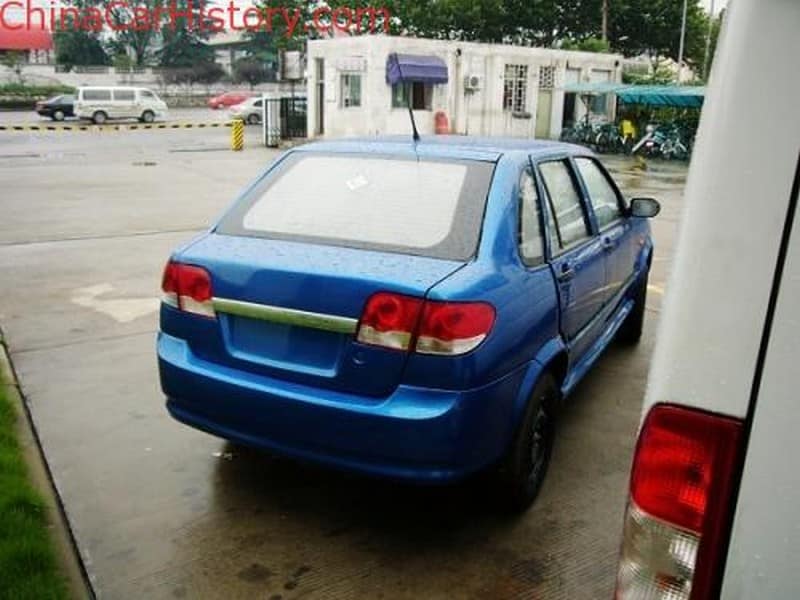
Unreleased Soyat sedan model (photo by Autohome)
Before the takeover in November 2007, Nanjing Auto first undergoes a major reorganization. Nanjing Nanya, the joint venture with Fiat, ceases to exist in October 2006. That results in one of the shortest series productions cycles ever seen. Nanjing Nanya developed its own sedan based on the Fiat Siena, which was launched as Fiat Perla in July 2006. Three months later, it is already end of story for that model.
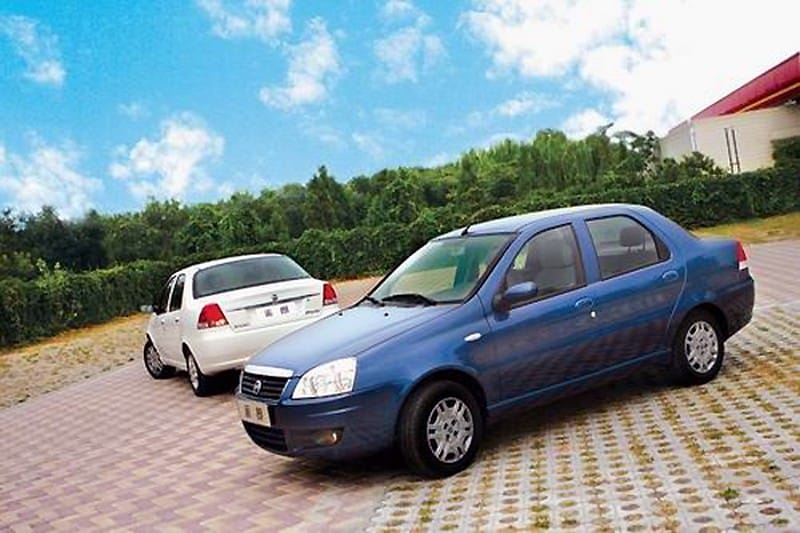
In September 2006, Nanjing Iveco acquires its sister company Yuejin Automobile, which concentrates all of Nanjing’s trucking activities within the joint venture with Iveco. This is also Nanjing’s only automaker to survive after the acquisition by SAIC Motor. Under SAIC Motor, Nanjing Auto acts as a holding company, with the Nanjing Iveco being the most important asset. That company just continues to produce Iveco and Yuejin trucks.
Like Nanjing Nanya, Nanjing Wuxi Xinyatu stops production after the takeover and that ends the story of the Soyat Ibiza in China. The factory passes into the hands of SAIC Maxus a few years later and now produces light commercial vehicles under the Maxus brand. Finally, Nanjing Mingyue merges entirely into SAIC Motor Passenger Vehicle. As before in the United Kingdom, Roewe (Rover) and MG are now united under one roof.
Next week
The Volkswagen Santana marks the start of modern passenger car production in China. Next week we explore the fortunes of the SAIC-Volkswagen joint venture.

